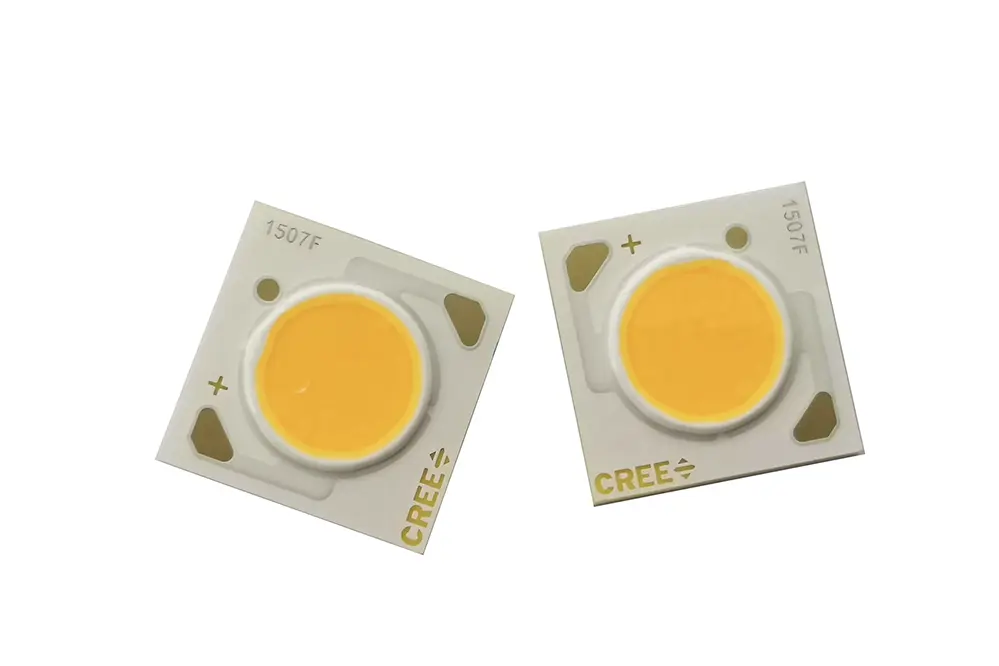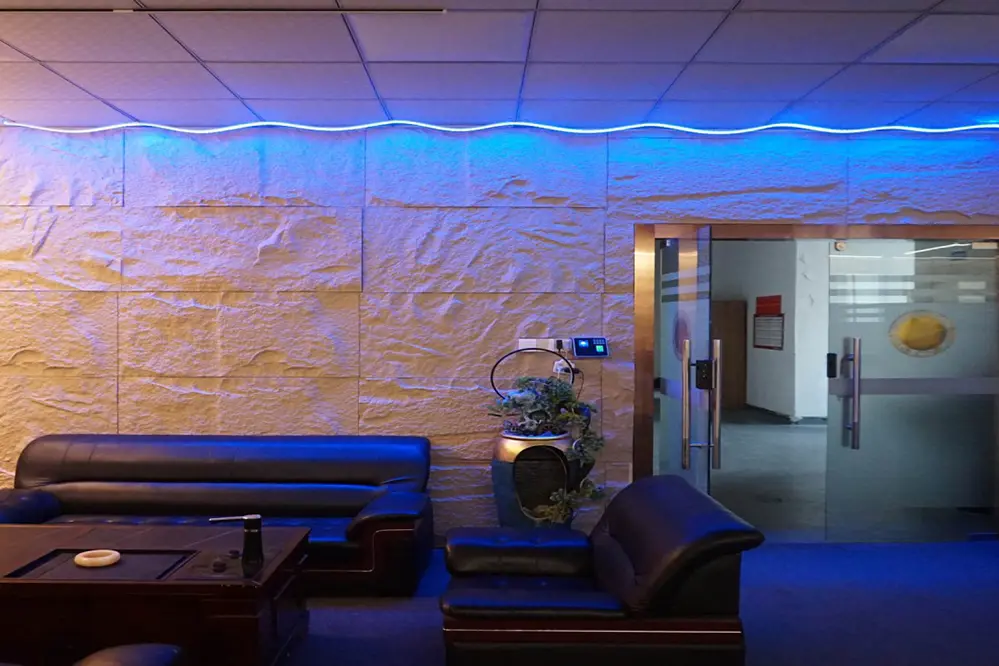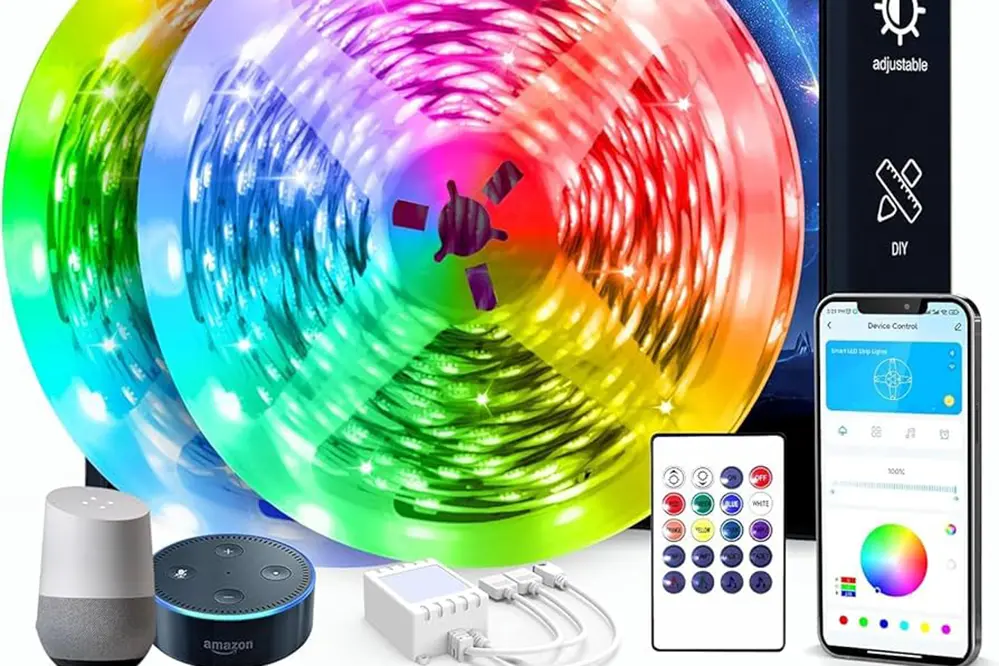COB LED vs. CREE LED: which one truly stands out in the realm of modern lighting solutions? This question often leaves consumers and industry experts pondering the best choice for their specific needs. Many people struggle with understanding the differences between these two LED technologies, often leading to misconceptions and missed opportunities for optimal lighting solutions.
The significance of this topic cannot be overstated, as choosing the right LED can dramatically impact energy consumption, cost efficiency, and overall lighting quality. COB LEDs, known for their high lumen output, offer a distinct advantage in certain applications, while CREE LEDs are celebrated for their superior color rendering and reliability. In this article, we will explore the key differences between COB and CREE LEDs, including their design, performance, and ideal use cases.
By the end, you’ll have a comprehensive understanding of which LED technology aligns best with your needs. Embark on this informative journey to illuminate your knowledge and make the most informed lighting decisions.
Introduction to LED Technology
LED technology stands as a beacon of innovation in the world of lighting solutions, and with each passing year, it continues to shine brighter.
Evolving from early rudimentary designs, LEDs now offer unparalleled possibilities.
These compact yet powerful light sources transform spaces, blending functionality with a touch of elegance. LED technology is characterized by its energy efficiency, longevity, and versatility, presenting a compelling case for widespread adoption across various applications.
As we further delve into the intricate landscape of LED illumination, it becomes increasingly clear that these tiny, yet mighty, devices epitomize the spirit of modern innovation. LED technology doesn’t merely illuminate; it revitalizes, offering a “brighter” future with its myriad advantages.
Understanding COB LED
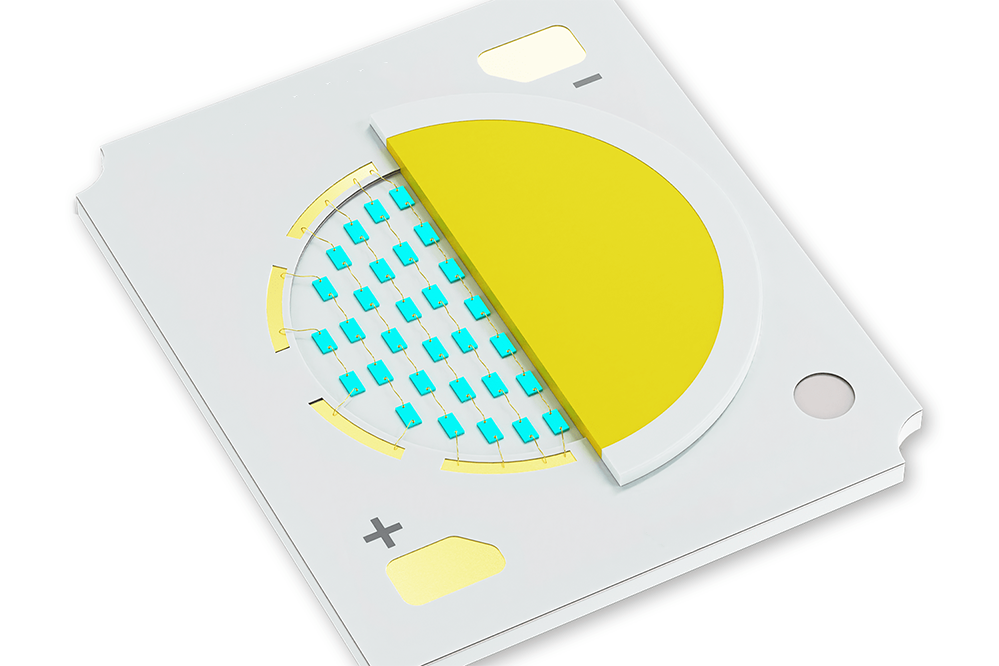
COB LED technology exemplifies the revolution in lighting design with its compelling efficiency and versatility.
Introduced in recent years, COB, or Chip on Board LED, represents an advancement in the integration of multiple LED chips into a single die to produce a unified light output. This innovation enhances brightness and efficiency, proving beneficial in various applications that demand powerful illumination.
Unlike older LED structures, COB LEDs eliminate the need for discrete packaging of chip arrays, thereby achieving higher lumen output per watt and decreasing thermal resistance. This seamless integration facilitates devices with exceptional performance in heat management, crucial for longevity and stability in LED systems.
The elegance of COB technology lies not just in its robust functionality but also in its minimalistic design, often showcased in stage lighting, automotive applications, and sophisticated architectural lighting solutions, where superior luminescence is paramount. COB LEDs epitomize a fusion of art and science, introducing a refined approach to contemporary illumination needs.
In essence, COB LED technology continues to inspire with its promise of not only brighter light but also a sustainable future.
Understanding CREE LED
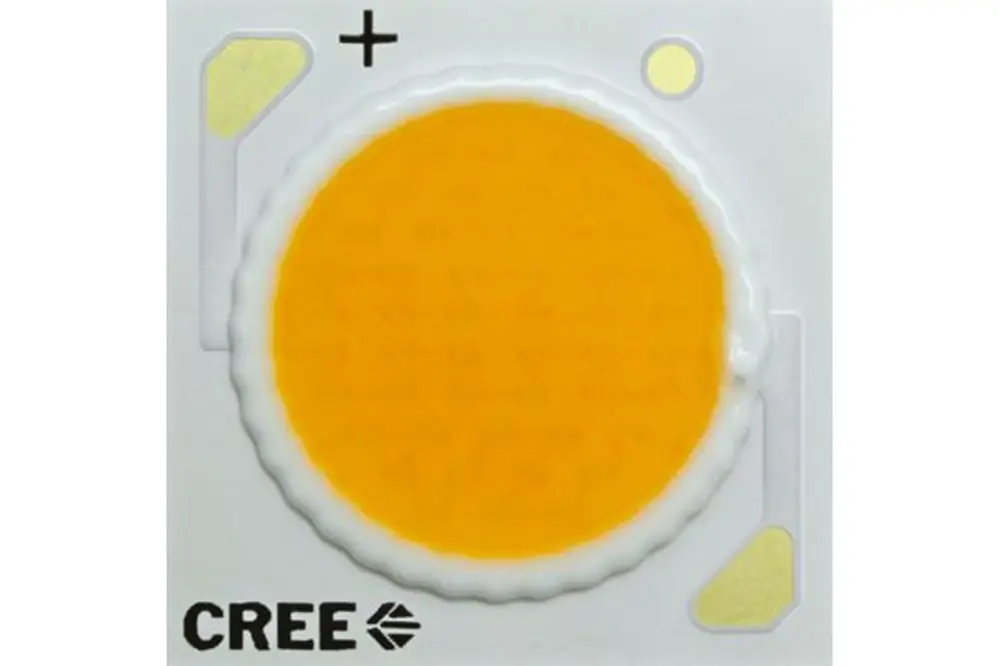
A revolution in LED technology.
CREE LEDs are the torchbearers of modern lighting innovation. Their design philosophy centers around harnessing the maximum potential of semiconductor materials, resulting in an impressive amalgamation of luminous efficiency and durability. Significantly, they are at the forefront of advancements in LED construction, consistently striving to achieve remarkable performance metrics across diverse applications.
CREE LEDs outperform in lumen output and efficacy.
This distinctive range of LEDs distinguishes itself through extraordinary reliability; it is the formidable choice for demanding environments where steadfast lighting is mandatory. Additionally, CREE LEDs demonstrate unsurpassed versatility, offering tailor-made solutions apt for varying necessities, including retail, residential, and industrial uses.
This dedication to excellence provides unparalleled opportunities for optimizing lighting experiences, unlocking new horizons in the realm of sustainable illumination solutions. CREE’s commitment to continuous innovation and high-performance lighting ensures they remain leading figures in LED technology as we step confidently into an illuminating future.
COB LED vs CREE LED: Key Differences
COB LEDs offer a streamlined design, a marvel of engineering efficiency, where many LED chips are packed closely together to form a single, intense light source. Typically producing a high-quality, uniform beam of light, they excel in maximizing light output with a broad, smooth distribution. On the other hand, CREE LEDs are celebrated for their cutting-edge technology and adaptability, delivering exceptional brightness and energy efficiency. Known for their advanced chip technology, CREE LEDs shine as the go-to option for applications demanding precise light control and unparalleled consistency. These vibrant differences highlight the unique strengths of COB and CREE technologies, illustrating their distinct potential to redefine lighting solutions across various contexts.
Efficiency Comparison
When considering efficiency, COB LEDs stand out as highly effective solutions for large-area illumination. They utilize a single circuit, reducing the number of components and potential loss of energy.
On the flip side, CREE LEDs excel in producing outstanding lumens per watt through advanced chip designs. This innovation positions CREE LEDs at the forefront of maximizing light output against energy input, rendering them a premier choice for energy-conscious applications.
CREE LEDs can achieve up to 150 lumens per watt, setting a benchmark for energy-efficient lighting.
In summary, while COB LEDs offer substantial energy efficiency for specific applications, CREE LEDs provide a wider spectrum of efficiency advantages. Their high luminous efficacy and technological advancements make them the frontrunner in energy-saving prowess, ultimately pioneering cutting-edge performance in the LED landscape.
Brightness Levels
When evaluating brightness levels, the comparison of COB LED vs CREE LED brings forth exceptional luminance, each with distinct advantages in different settings.
COB LEDs often achieve higher total light output with fewer components.
Their strength lies in producing uniform surface brightness, making them a preferred choice for applications requiring a broad spread of light such as downlights, floodlights, and automotive lighting. This uniformity ensures a blanket of rich, consistent illumination that captivates spaces with vibrancy and clarity.
In contrast, CREE LEDs, when combined with innovative optics and reflector panel designs, are renowned for their capability to deliver intense, focused brightness that enhances the performance of led lights. Whether lighting up a large venue or enhancing architectural brilliance, CREE LEDs make their mark by providing impeccable beam precision and high CRI for superior light quality. As a result, opting for CREE illuminates possibilities where precise illumination is essential, epitomizing a marriage of efficiency and extraordinary brightness for discerning applications.
Applications of COB LED
COB LEDs shine in diverse applications.
Their ability to emit a uniform spread of bright light has made them invaluable in the realms of stage lighting and retail displays. By creating an evenly distributed light, COB LEDs enhance the visual impact of products and presentations, turning ordinary spaces into masterpieces. Furthermore, these LEDs excel in the commercial sector where extensive lighting is paramount, transforming both large offices and intimate conference rooms into beacons of innovation and productivity.
Increasingly, homeowners are opting for COB LEDs.
These LEDs are a staple in residential settings due to their energy efficiency and aesthetic appeal, fitting seamlessly into kitchens, living rooms, and hallways. Their capability to be integrated into various design schemes while offering dependable lighting solutions strengthens their appeal in interior design.
Beyond the confines of personal and professional spaces, COB LEDs have been progressively embraced in outdoor applications such as street lighting, illuminating public parks, and modernizing transportation hubs. Their widespread adoption in these spheres demonstrates their robust performance and their pivotal role in shaping a brighter, more sustainable future. These endeavors solidify COB LEDs as instruments of progress, illuminating the path toward a world where excellence meets efficiency.
Applications of CREE LED
In an era where illumination marries functionality with sustainability, both CREE LED technology and pro9™ LEDs are leading the charge across diverse industries.
In recent years, CREE LEDs have revolutionized commercial lighting solutions, providing unmatched brightness and longevity that empower businesses while reducing operational costs, strengthening their portfolio of energy-efficient offerings. Their strategic deployment in retail environments enhances product visibility, elevating consumer experiences and driving sales performance.
Moreover, it’s not just retail spaces that have witnessed CREE’s transformative impact. Thanks to their precision and adaptability, these LEDs are adept at delivering focused light, essential in healthcare facilities, where precision lighting improves procedural accuracy and patient outcomes.
Not limited to the indoors, CREE LEDs also shine brightly in external applications. They are pivotal in public infrastructure projects, facilitating safe and efficient lighting of roads, highways, and pedestrian pathways, thus contributing to safer and smarter urban landscapes.
Ultimately, CREE LEDs are more than just lighting components—they are harbingers of innovation and efficiency in an ever-evolving technological landscape.
Advantages of COB LED
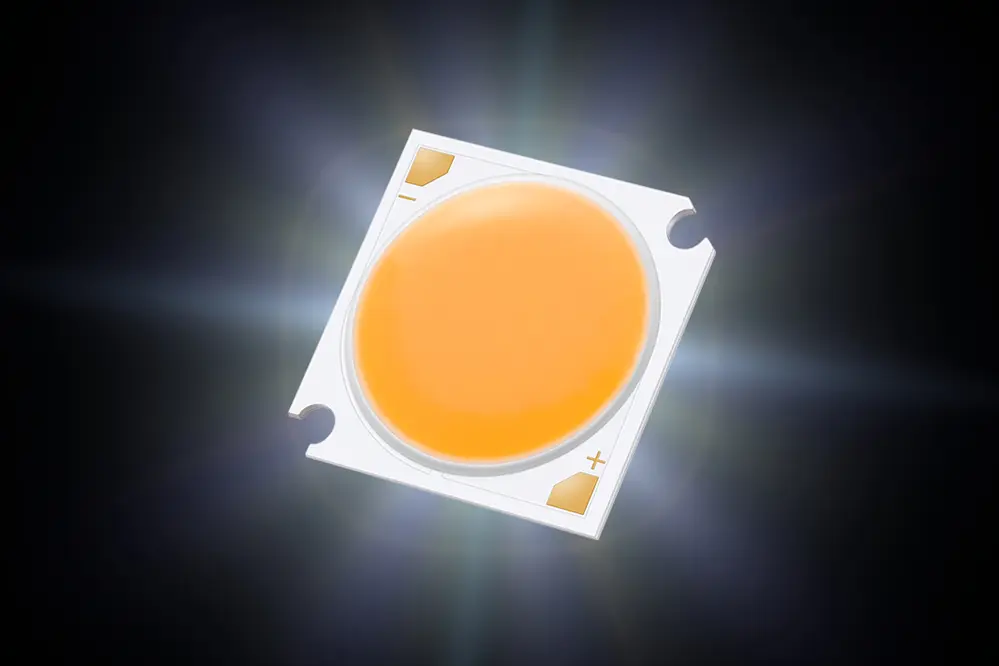
COB (Chip on Board) LEDs offer a brilliant amalgamation of performance and efficiency, ensuring an unparalleled lighting experience that stands at the forefront of modern illumination solutions.
Their compact design provides an impressive advantage with higher lumen output per watt, all while maintaining a manageable size.
This results in astonishingly efficient light fixtures that harness a unified source of illumination, producing a uniform and consistent light pattern across all environments, enhancing ambiance and clarity with precision.
Their unique structure, which includes sophisticated arrangements of diodes and cob led arrays, facilitates superior thermal management, allowing for the robust performance of LEDs in a variety of high-demand settings. As a result, they are a preferred choice for applications requiring intense, concentrated light such as streetlights, industrial lighting, and specialized architectural features. Their inherent design excellence and unwavering quality continue to “ignite” the future of lighting technology with transformative and energy-conscious solutions.
Advantages of CREE LED
CREE LED technology, along with pro9™ LEDs, shines with its potent combination of high efficiency, superior brightness, and robust reliability, making it a superstar in the lighting industry.
Renowned for their cutting-edge innovations, CREE LED panels, equipped with LED lights, offer remarkable performance with minimal energy consumption.
Significantly, these LEDs deliver consistent color temperatures and outstanding color rendering capabilities, ensuring precise color accuracy with a high CRI (Color Rendering Index), depending on the context.
These features make CREE LEDs ideal for applications requiring meticulous color reproduction, such as museums and retail environments.
Furthermore, CREE’s emphasis on sustainability has led to an array of eco-friendly solutions, demonstrating how technological prowess can coexist with environmental consciousness, improving not only today but also securing a brighter tomorrow.
Ultimately, the goal of CREE LED’s team is not merely to illuminate spaces. Instead, visionary technological advancements invite us to see the future through a lens bathed in possibility.
Limitations of COB LED
COB LEDs, while celebrated for their efficiency and compact design, fall short in specific applications that demand more targeted light.
Efficiency in heat management remains a significant challenge for COB technology.
Much of the generated heat stems from concentrated light emission on a relatively small surface, necessitating advanced heat sinks and thermal management strategies to prevent overheating, thereby maintaining longevity and performance.
Another limitation lies in the cost associated with developing intricate heat dissipation mechanisms. As such, COB LEDs struggle in scenarios requiring high-intensity focused lighting due to potential “hot spots.” Effectively addressing these issues is essential to unlocking COB’s full potential as an efficient, future-ready lighting solution.
Limitations of CREE LED
CREE LEDs, while often praised for their luminous efficiency and durability, are not without their constraints.
In recent years, researchers identified a significant limitation regarding CREE LEDs’ vulnerability to thermal stress. This limitation poses challenges for sustained performance, especially in high-temperature environments, potentially affecting overall lifespan and efficiency.
Moreover, it is the initial cost that frequently raises eyebrows. Despite the brand’s reputation for quality, the steep price point associated with CREE LEDs can deter potential users who prioritize budget over premium performance.
Recognizing the importance of innovation, CREE has invested in overcoming these constraints. Focusing on developing enhanced materials and configurations, they aim to minimize heat-related issues and reduce costs through economies of scale.
In overcoming these obstacles, CREE LEDs could achieve broader applications, setting a new standard in lighting technology.
Choosing Between COB and CREE LED
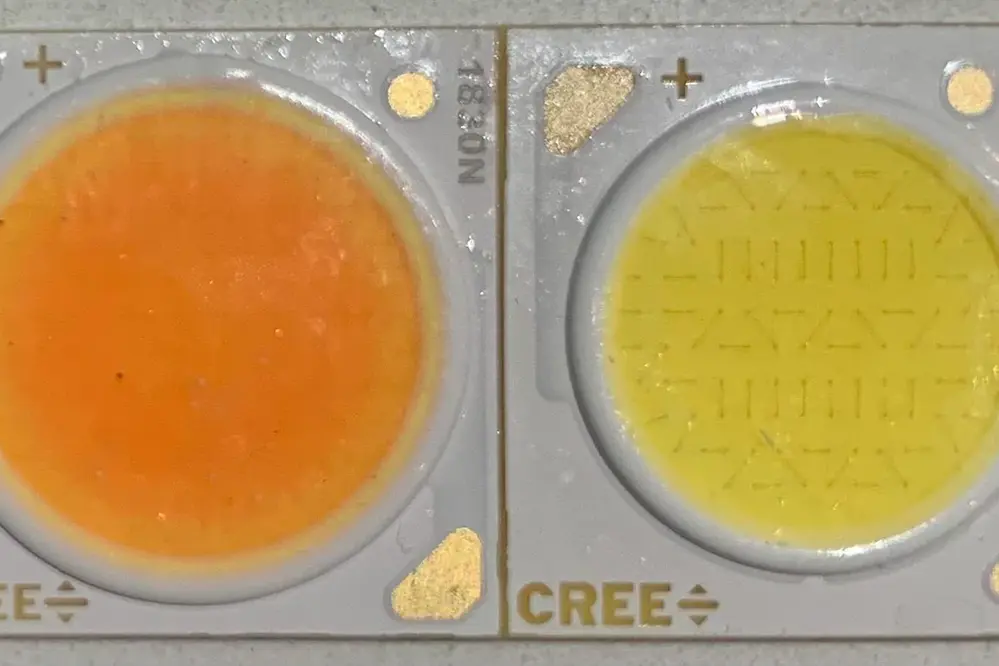
As you embark on the journey of selecting the perfect lighting solution, both COB and CREE LEDs present remarkable advantages and opportunities.
Ultimately, the choice may depend on specific lighting needs.
COB LEDs offer continuous, uniform lighting that suits applications requiring a wide field of illumination, demonstrating their potential for residential, commercial, and even industrial use, thanks to unmatched brightness, adaptability, and efficiency.
On the other hand, CREE LEDs promise exceptional longevity and proven performance in diverse conditions, making them a beacon of reliability, regardless of the size of the installation. While COB excels in broader applications, the decision might lie in weighing the balance of cost, energy efficiency, and the transformative potential each technology brings. In your lighting journey, each option represents a “bright” step toward innovation and modernity.
FAQs
What is the difference between Cree and COB LED lights?
COB and Cree LEDs are unique technologies.
The distinction lies primarily in design and application. COB, or Chip on Board, LEDs consist of multiple LED chips packed closely together as a single lighting module. This configuration offers extensive, uniform light output with less glare, making them excellent for broad lighting purposes. Conversely, Cree LEDs, renowned for innovation and quality, provide high-intensity light with remarkable efficiency.
COB LEDs excel in achieving even light distribution.
Cree LEDs, with their focus on efficiency and intensity, are preferred for applications requiring bright, directed light.
Both technologies contribute significantly to lighting advancements, paving the way for energy-efficient solutions. In recent years, the ongoing development of these technologies promises to reshape our lighting landscape. Each offers distinct benefits aligned with specific lighting needs, showcasing the expanding potential of LED innovations.
Are Cree LEDs better?
The realm of LED technology shines brightly with innovation, and Cree LEDs stand as a formidable beacon of advanced lighting prowess. Renowned for their efficiency, these LEDs often captivate the attention of industry giants and enthusiasts alike. Their unparalleled luminescence and durability have cemented their position at the pinnacle of lighting solutions.
In recent years, Cree made headlines by unveiling a new series of LEDs, further elevating their reputation. This series boasted enhanced light quality and energy efficiency, which not only redefined industry standards but also set a benchmark for competitors. Engineers and designers hailed this advancement as a game-changer, showcasing Cree’s commitment to pushing the envelope.
Without a doubt, the hallmark of Cree’s superiority lies in its innovation ethos. For those embarking on projects requiring top-tier illumination, Cree’s LEDs promise longevity and performance. The intense focus on research and development has led to the creation of products that outshine many in terms of thermal management and intense brightness.
Aside from the remarkable attributes Cree LEDs bring to lighting schemes, the brand’s dedication to sustainability is admirable. By significantly reducing energy consumption, these LEDs not only streamline costs but also echo the global call for environmentally conscious solutions. Thus, users enjoy both excellence and eco-efficiency in their illumination pursuits.
Ultimately, decisions rest on individual needs, but Cree LEDs continue to illuminate with exceptional promise. Their reputation is not just built on past success but on future potential.
Is COB LED better than LED?
Navigating the landscape of LED technology, one inevitably encounters the ongoing discourse of COB versus traditional LEDs, with both offering unique advantages and applications.
Chip-on-Board (COB) LEDs advance lighting technology by clustering multiple LED chips, fostering an efficient and uniform light output. Their design minimizes the thermal resistance, resulting in enhanced energy efficacy and superior luminous flux. The homogeneous light produced by COB LEDs makes them a popular choice for applications requiring consistent brightness and reduced glare, such as in architectural lighting, photography, and streetlights.
In contrast, conventional LEDs, which encapsulate individual chips, have their own array of benefits. They are particularly celebrated for their adaptability, coming in various forms to suit diverse needs. Their modular nature allows for easy customization and the ability to create a broader spectrum of light outputs by combining different colors. This versatility makes them ideal for intricate projects that demand personalized lighting solutions.
Evaluating these technologies requires an understanding of context and application. While COB LEDs are praised for their stunning efficiency and uniformity, traditional LEDs are unmatched in their flexibility and customization potential. Thus, the choice between the two is dependent on the specific needs of the application, factoring in both efficiency and design versatility. Both technologies continue to evolve, promising a future replete with possibilities for innovation and enhancement in lighting solutions.
What are the disadvantages of COB LED strips?
COB LED strips, while offering exceptional brightness and uniformity, do have certain limitations that must be acknowledged. These disadvantages, although not overshadowing their capabilities, do present areas for consideration in specific applications.
One of the primary challenges of COB LED technology is its heat management. Due to the high density of LEDs on a small chip, COB strips can generate a significant amount of heat, necessitating effective heat dissipation mechanisms to prevent thermal damage. Consequently, additional cooling systems are often needed, which can increase both complexity and cost.
Furthermore, COB LED strips lack flexibility compared to other types like SMD LED strips. These rigid configurations can limit their use in applications requiring bends and curves, making them less suitable for environments that demand adaptive design elements. Thus, for installations necessitating artistic and dynamic layouts, alternative solutions may be more appropriate.
Additionally, the initial cost of COB LED strips can be higher compared to other LED technologies. While they provide longer-term energy efficiency and reduced operational costs, budget-conscious projects may find the upfront investment challenging. This financial aspect is crucial for planners and developers to weigh against the performance benefits, ensuring optimal resource allocation and project success.
How do COB LEDs differ from CREE LEDs?
COB LEDs, or Chip on Board LEDs, utilize multiple LED chips bundled together on a single substrate, enabling superior light distribution and efficiency. This innovative design inherently reduces the heat output, thereby enhancing their lifespan and performance. In contrast, CREE LEDs distinguish themselves with their focus on cutting-edge semiconductor innovations, producing LEDs with exceptional brightness and efficacy. Known for pioneering brilliant illumination solutions, CREE LEDs excel in delivering powerful lumens effectively, often dominating the industry with high-intensity applications.
When assessing energy consumption and luminous output, COB LEDs impress with their ability to yield a softer, uniform beam that covers broader areas. This quality makes them ideal for applications demanding even lighting across large surfaces. Meanwhile, CREE LEDs often surpass in delivering concentrated, more intense lighting, making them the preferred choice for applications where penetrating light is essential, such as flashlights and spotlights.
Durability is another noteworthy consideration. The design of COB LEDs facilitates heat dissipation, reducing the stress on individual LED chips and prolonging their operational lifespan. Conversely, CREE’s robust engineering ensures their LEDs undergo rigorous testing, resulting in products that consistently exhibit outstanding resilience and longevity. This makes CREE an industry favorite among those prioritizing long-term reliability.
We must also consider the versatility and customization options available with each. COB LEDs are celebrated for their adaptability in diverse lighting scenarios due to their compact, all-in-one structure. CREE LEDs stand out with their emphasis on precision lighting solutions enabled by their unique designs and extensive research into LED technology.
Ultimately, both COB and CREE LEDs offer remarkable advantages that can suit a variety of needs and preferences, reflecting a promising future for LED technology.
Conclusion
COB and CREE LEDs both excel in their respective applications, showcasing a diverse portfolio of lighting solutions. COB LEDs are particularly valued for their ability to deliver uniform lighting, making them ideal for expansive applications in residential, commercial, and industrial settings. Their adaptability and unrivaled brightness make them a staple in wide-field illumination.
On the other hand, CREE LEDs are celebrated for their durability and trusted performance across various environments. Choosing CREE LEDs means embracing a partnership with modern innovation, ensuring reliable lighting solutions that stand the test of time.
In today’s rapidly-evolving lighting landscape, staying informed about these technologies empowers you to make future-ready choices. This knowledge ensures that your lighting decisions are not only current but also aligned with the latest advancements, highlighting the true brilliance at the heart of LED technology.
